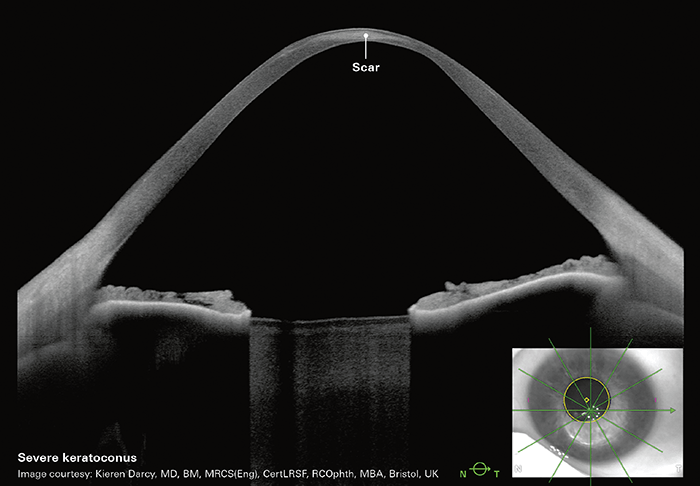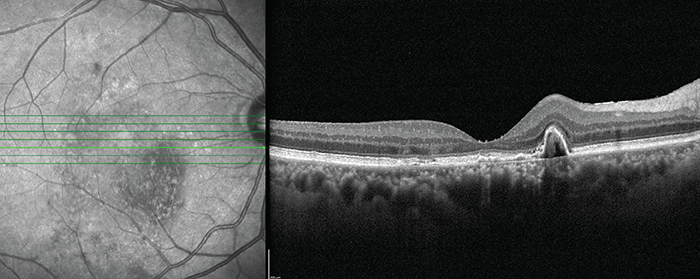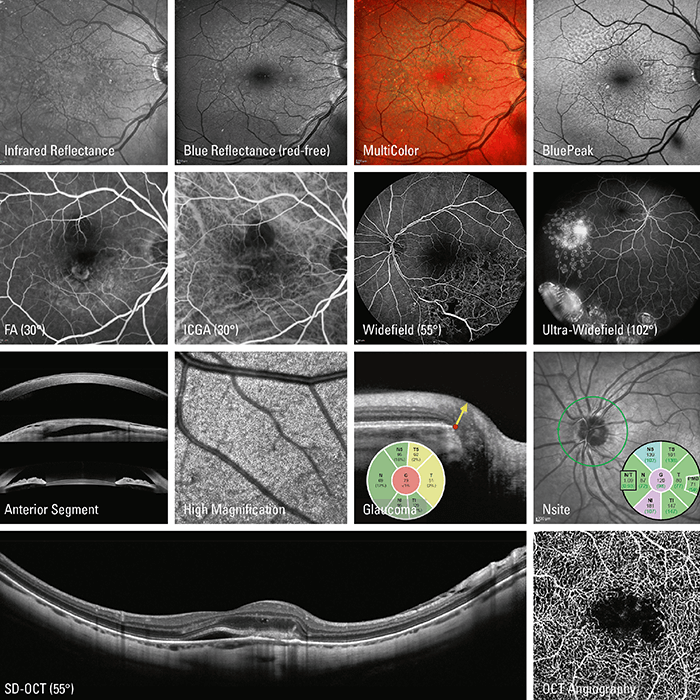
With the recent acquisition of Visotec GmbH, a Lübeck-based company specializing in remote diagnostics based on applied Full-Field OCT technology (FF-OCT), Heidelberg Engineering has expanded its ophthalmic ecosystem.
The beginning: SD-OCT and SPECTRALIS
Since the introduction of the technology, Heidelberg Engineering has explored and developed the potential of OCT for the dynamic visualization of diagnostic information. The initial result of these efforts was the optimization of spectral domain OCT (SD-OCT) technology for retinal imaging, and the introduction of SPECTRALIS®. This multimodal imaging platform for the posterior segment is driven by a powerful combination of confocal scanning laser ophthalmoscopy (cSLO), SD-OCT and real-time active eye tracking. Today, the upgradable, modular design of SPECTRALIS allows clinicians – and researchers – to configure each SPECTRALIS to the specific needs of their practice or clinic.
In the spring of 2022, SPECTRALIS became the first commercially available OCT that allows users to switch between three OCT scan speeds – 20, 85 and 125 kHz A-scan rates – to find the ideal balance of image quality and clinical workflow.
All-in-one device for the anterior segment: SS-OCT powers ANTERION
ANTERION® uses the power of swept-source OCT imaging (SS-OCT), combined with a longer wavelength (1300nm), to deliver high-resolution images and precise measurements for the anterior segment. Its most recent software update added new clinical features to further improve the quality of cornea and biometry data and avoid refractive surprises. Thanks to high-impact additions – including the Epithelial Thickness Module, a new ectasia view with integrated SCORE (Screening Corneal Objective Risk of Ectasia) Analyzer, and automatic detection of the scleral spur in the anterior chamber – ANTERION supports clinicians in their delivery of patient care, and showcases the potential of high- resolution SS-OCT in clinical disciplines, such as cataract and refractive surgery planning.

Going beyond: Using FF-OCT to facilitate distributed care
Heidelberg Engineering continues to strategically invest in and develop and invest in OCT and healthcare IT technologies to synthesize whole eye data, access artificial intelligence (AI) analytics, and securely share information. With the acquisition of Visotec, it has added expertise in applied FF-OCT and ground-breaking work on an innovative solution to deliver distributed care – a fitting extension of its core strength in multimodal diagnostic imaging.
Unlike SS-OCT and SD-OCT, FF-OCT acquires two- dimensional (2D) en face views which can then be assembled into B-scans (1).The quality of the B-scans allows visualization of the retinal layers from the choroid, retinal pigment epithelium, capillary layer, second capillary layer, vasculature, and nerve fiber layer toward the ONH to the inner limiting membrane. The images can be colocalized with reference images acquired with the SPECTRALIS to ensure accurate follow-up of disease progression. “We focused on the development of a technology to power an affordable hand-held device that allows an elderly population to self-administer a test for monitoring wet AMD,” explains Helge Sudkamp, co-founder and CEO of Visotec. “Based on the test results, clinicians can then schedule the appropriate treatment intervals (2).”
As Krysten Williams, Head of Global Marketing and Education at Heidelberg Engineering notes, Visotec’s elegantly simple technology under development excellently demonstrates the great potential of FF- OCT technology, “We are excited about the possibilities surrounding ‘OCT anywhere’ – a truly novel development that could facilitate remote monitoring and distributed care, improving the efficiency of healthcare services on a global scale.”
Capitalizing on its core technologies, Heidelberg Engineering continues to explore innovative technological and clinicals solutions that ultimately empower clinicians to improve patient care.

References
- Helge Sudkamp et al, “Simple approach for aberration-corrected OCT imaging of the human retina,” Opt. Lett. 43, 4224 (2018) PMID: 30160757.
- Claus von der Burchard et al, “Self-Examination Low-Cost Full-Field Optical Coherence Tomography (SELFF-OCT) for neovascular age-related macular degeneration: a cross-sectional diagnostic accuracy study,” BMJ Open (2022) PMID: 35760534.
